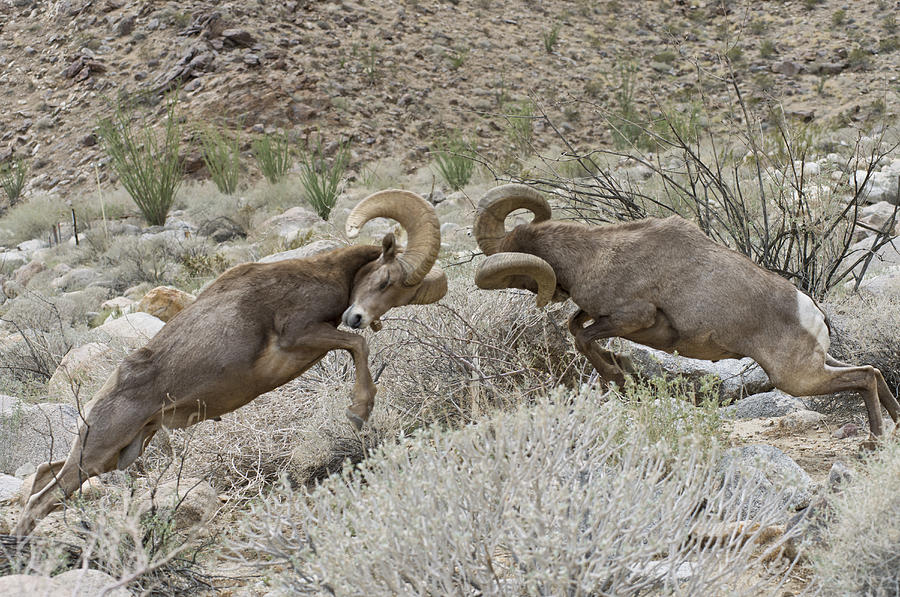You can see what the snake dance looks like in this documentary from 1913.
Hopi people who live in the Southwestern USA, regard snakes as their "brothers" and rely on them to carry their prayers for rain to the underworld, where the gods and the ancestor spirits, who control the rain, live.
Four days before the snake dance, the Snake priests leave their villages to gather snakes. The priests carry a digging sticks to dig the snakes out of their holes and snake whips, which are rods with two eagle feathers attached to them.
Once they dig the snakes out, they stroke them with the snake whip to make them straighten out and then grab them behind the head. They bring the snakes to the village where they are put inside the "kiva", sacred underground room, where they stay until the day of the snake dance.
On the day before the snake dance, a race is run across the plain and up the steep slope of the "mesa" (village) just before sunrise, symbolising the rain-gods bringing water to the village.
Then the members of the Antelope clan, who also participate in the ceremony, build a "kisi", a shallow pit covered with a wooden board, which represents the entrance to the underworld where the gods and the ancestors live.
At sunset of the day before the snake dance, the Snake and Antelope dancers dance around the plaza, stamping on the "kisi" board and shaking rattles to simulate the sounds of thunder and rain.
The Antelope priests dance with green vines around their necks and in their mouths, just as the Snake priests will later dance with snakes around their necks and in their mouths.
On the day of the snake dance, the snakes are washed in a large jar filled with water and herbs. Finally the snakes are gathered up in a bag, carried to the village plaza, and placed in the "kisi".
Then, each Snake priest reaches into the "kisi", grabs a snake, and they all dance around the village plaza with the snakes first in their hands and then in their mouths, "to symbolically pass their prayers for rain to the snakes".
Finally, one of the Snake priests makes a large circle of cornmeal on the ground. All the snakes are thrown into the circle, while women and girls scatter cornmeal on the wriggling reptiles.
Then the Snake priests grab the snakes, and run out of the village where the snakes are released to carry the prayer for rain to the gods and the ancestor spirits in the underworld, and to inform them that the Hopis still live in the old way of their ancestors.
Soooo...Very interesting...Remember my post "Horned serpent" about the Horned Serpent, whom Hopi believed to be the guardian of water and is associated with rain, thunder and lightning?
In the article I said that when I first saw the depiction of the Horned Serpent, I thought that this could be a depiction of an actual horned snake, the American horned rattlesnake (Crotalus cerastes).
In the article, I then explained why I changed my mind and why I believe that the Horned Serpent was a complex animal calendar marker for rain season an animal hybrid with:
a body of a rattle snake
and horns of the desert big horn sheep.
The thing is it is possible that the horns of the Horned Serpent are not (just) the horns of the desert big horn sheep. They could (also) be the horns of the pronghorn (false antelope)...
The desert big horn sheep mating starts in Jul and ends in Oct. During the rut, the rams charge at each other head-on crashing their horns together with tremendous bangs...Thundering bangs...So they are ideal calendar markers for the monsoon season....
In their southern range, the pronghorns mating starts Jul and ends in Sep. During the rut, the bucks charge at each other head-on crashing their horns together with tremendous bangs...Thundering bangs...Ideal calendar markers for the monsoon season...Arizona climate chart...
And interestingly, it is the snake and antelope clans that perform the snake dance rain ceremony together. Why? There has to be the reason for it, albeit one that has been long forgotten...The reason we are now rediscovering...
Something else: Two depictions of the Hopi antelope katchina (spirit doll). You can see that one has horns that look like pronghorn horns and that the other one has horns that look like big horn sheep horns...So did Hopis consider both of these animals to be the same "spirit"?
Final proof that the Horned Serpent from the Hopi mythology was not an actual horned rattlesnake (Crotalus cerastes), is the fact that horned rattlesnakes are not used in the rain snake dance ceremonies.
The rattlesnake that is used is the Prairie Rattlesnake (Crotalus viridis). You can read more about it in this article which contains some early accounts of the snake dance ceremony
One interesting thing about Prairie Rattlesnakes, is that this species usually mates between Jul and Sep...
And when rattlesnakes mate they dance...Amazing pics by Marc Perkins.
And so, in August, the peak mating season of the dancing snakes, dancing big horn sheep and dancing pronghorn antelopes, and in the middle of the Monsoon season in the SW USA, the members of the Antelope and Snake Clan dance for rain...
And the Horned Serpent, the guardian of the waters releases the life saving rain and refills the rivers and wells...
To read more about ancient animal and plant calendar markers, start here…then check the rest of the blog posts related to animal calendar markers I still didn't add to this page, and finally check my twitter threads I still didn't convert to blog post...I am 9 months behind now...














No comments:
Post a Comment